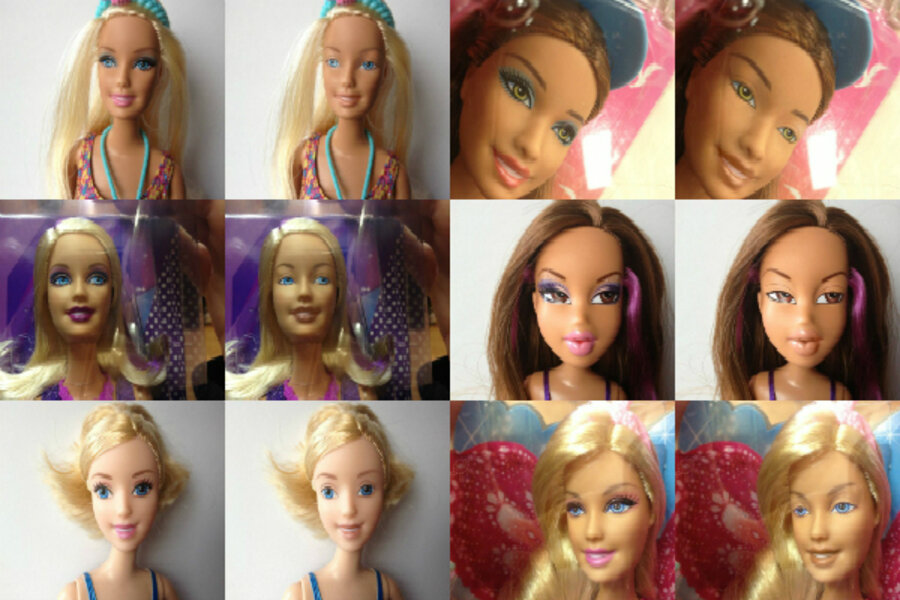Dolls look better without makeup; now if only we could buy them that way
Loading...
There's an image powdered across the Internet of a Barbie head without makeup. Below her eyes are swollen, fleshy bags. Her cheeks bloat outward. Her lips looks flat. It looks ugly. And when Pittsburgh-based artist Nickolay Lamm saw the photoshopped image, he thought it looked exaggerated as well.
"There's no way that Barbie looks that bad without makeup," Mr. Lamm says.
So he went to a nearby Target with a mission and an alibi. He was going to buy some Barbie dolls and conduct a "mini-investigation," published originally by MyVoucherCodes.co.uk, to see what they really looked like au naturel. If any Target employee, suspicious of lone 24-year-old man browsing the doll section, asked why he bought four Barbie dolls, he'd blame his sister (who doesn't exist).
Back home, he photographed the dolls — two Barbies, one Princess Disney, one Bratz — and then had a friend photoshop away the heavy eye-liner, spider-leg long eyelashes, and rich lipstick. And can you believe it? The dolls look healthy and beautiful without all that pigment fuss.
This actually worried Lamm at first because he figured the media wouldn't appreciate images of makeup-less dolls that didn't look malnourished, but he was wrong.
Babble.com writer Maegan Tintari admired the "prettier, softer, and more approachable" dolls while criticizing the industry that decided to give them "brightly layered eyeshadows, impossibly long eyelashes, and bold lips."
"And if these dolls are marketed towards children, mostly to little girls of an age before they can really conceptualize things like makeup and trying to make ourselves look prettier than we are with said makeup, then why do the already pretty faced dolls need the makeup at all?"
iVillage writer Jenna McCarthy said: "They all look perfectly fine – often better – in the unpainted state. The question of course becomes: Would kids still want to play with them? My guess is yes. But it's up to Mattel and the other makers to give girls that option."
Will Mattel consider letting the dolls' natural beauty shine? Calls and e-mails to the company this morning went unanswered. Lamm says they haven't contacted him since his photos went viral a couple weeks ago. But, if they did, he knows what he'd tell them.
"In real life, I don't really care if she has makeup or doesn't, but makeup is so commonplace," he says. "I remember in middle school when nobody had makeup, at least not everybody. I miss the naturalness."
"Yeah, we should start making dolls without makeup," Lamm said.







